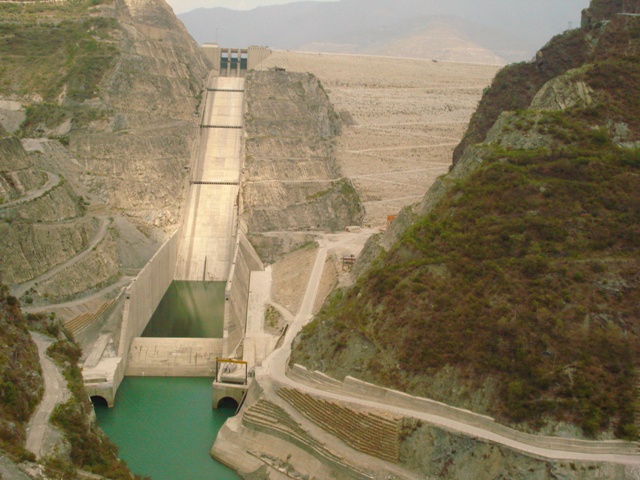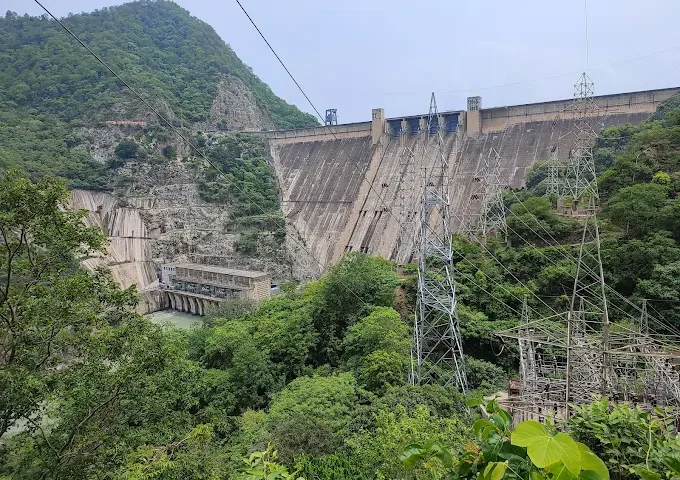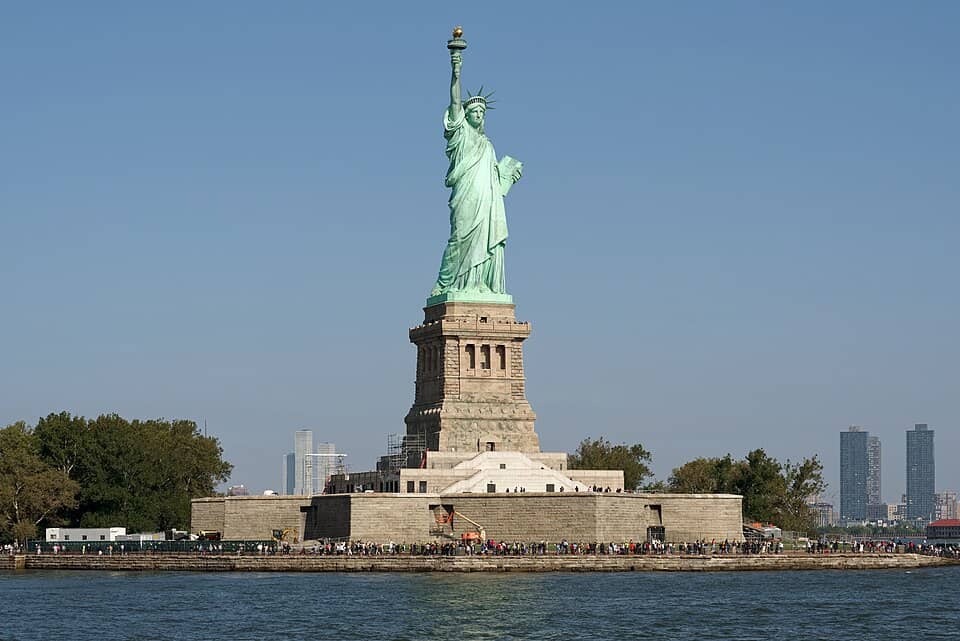
Majestic Palaces in India That Embody Royal Grandeur
June 12, 2025
Beautiful Lakes in India To Take Your Breath Away
June 13, 20256 Biggest Dams in India Featuring Tehri Dam and Five Other Highest Dams
India, with its diverse topography and vast river systems, has built numerous dams to support agriculture, generate hydroelectricity, and provide water for industrial and domestic use. Among these, some dams stand out not just for their utility but for their impressive height and engineering marvel. These dams are vital to India’s infrastructure, economy, and environment.
This article covers the six biggest and highest dams in India, starting with the majestic Tehri Dam and including five other towering structures that symbolize the nation’s commitment to water management and renewable energy.
1. Tehri Dam – Uttarakhand
Height: 260.5 meters
River: Bhagirathi River
Location: Tehri Garhwal, Uttarakhand
Type: Earth and rock-fill embankment dam
Tehri Dam is the tallest dam in India and one of the highest in the world. It stands at a staggering 260.5 meters, making it not just an engineering marvel but also a crucial component of India’s hydroelectric power production.
- Purpose: Power generation, irrigation, and water supply.
- Hydroelectric capacity: 1,000 MW (with future upgrades to 2,400 MW).
- Significance: It supplies water to Delhi, Uttar Pradesh, and Uttarakhand, and helps control floods.
- Tourism: The nearby Tehri Lake has become a hotspot for adventure sports like jet skiing and paragliding.
Fun Fact: It is Asia’s largest and most complex multi-purpose river valley project.
2. Bhakra Nangal Dam – Himachal Pradesh
Height: 226 meters
River: Sutlej River
Location: Bilaspur district, Himachal Pradesh
Type: Concrete gravity dam
Bhakra Dam, completed in 1963, is among the most iconic dams in India and was once the highest dam in the country before Tehri.
- Hydroelectric capacity: 1,325 MW.
- Purpose: Irrigation for Punjab, Haryana, Rajasthan; power generation and flood control.
- Reservoir: Gobind Sagar, one of India’s largest reservoirs.
- Engineering marvel: Built with American collaboration, this dam showcases early post-independence engineering excellence.
Interesting Note: India’s first Prime Minister, Jawaharlal Nehru, called Bhakra “the temple of modern India.”
Explore More- Majestic Palaces in India That Embody Royal Grandeur
3. Sardar Sarovar Dam – Gujarat
Height: 163 meters
River: Narmada River
Location: Narmada district, Gujarat
Type: Gravity dam
The Sardar Sarovar Dam is the largest dam on the Narmada River and among the most controversial due to its impact on local communities and environment.
- Purpose: Irrigation, drinking water supply, and hydroelectric power.
- Hydroelectric capacity: 1,450 MW.
- Beneficiary states: Gujarat, Maharashtra, Madhya Pradesh, and Rajasthan.
- Tourist attraction: Close to the Statue of Unity, the world’s tallest statue.
Noteworthy: The dam provides drinking water to over 9,000 villages and dozens of towns in Gujarat.
4. Idukki Arch Dam – Kerala
Height: 168.91 meters
River: Periyar River
Location: Idukki district, Kerala
Type: Double curvature arch dam
Idukki Dam is India’s highest arch dam and a technological wonder. It is flanked by two hills – Kuravan and Kurathi – and is unique in its curved design.
- Power generation: Key part of the Idukki Hydroelectric Project, one of the biggest in Kerala.
- No spillway gates: Water flows through tunnels to the powerhouse.
- Environment: Surrounded by lush green forests and wildlife, part of the Western Ghats.
Travel tip: The dam site is a major tourist destination, especially during monsoons when the reservoir is full.

5. Nathpa Jhakri Dam – Himachal Pradesh
Height: 185 meters (intake structure)
River: Satluj River
Location: Kinnaur district, Himachal Pradesh
Type: Gravity dam with underground power station
Though not a conventional towering wall-type dam, Nathpa Jhakri is among India’s tallest hydroelectric projects due to its vertical intake tunnel and underground power station.
- Power capacity: 1,500 MW, the largest hydroelectric power station in India.
- Structure: The dam diverts water to an underground tunnel for energy generation.
- Geography: Located in a seismic zone, the dam was built using advanced geological studies.
Did you know? It plays a crucial role in meeting peak power demands in North India.
Explore More- Top National Parks in India: A Journey Through Nature’s Finest Sanctuaries
6. Koldam Dam – Himachal Pradesh
Height: 167 meters
River: Sutlej River
Location: Bilaspur district, Himachal Pradesh
Type: Gravity dam
Koldam Hydropower Project, developed by NTPC, is one of the newer dams in India and is important for its minimal environmental impact and advanced engineering.
- Power generation: 800 MW.
- Design: Built to withstand seismic activity and floods.
- Unique feature: The reservoir has submerged less forest and displaced fewer people compared to other big dams.
Tip: Often overlooked, Koldam is a great example of balancing development with sustainability.
Importance of Dams in India
Dams are lifelines for India’s economy and ecosystems. They serve multiple purposes:
- Irrigation: Dams like Bhakra and Sardar Sarovar help irrigate millions of hectares of agricultural land.
- Drinking Water: Essential for water supply in urban and rural areas.
- Electricity: Hydropower contributes to renewable energy goals.
- Flood Control: Protect downstream regions during monsoons.
- Tourism and Recreation: Reservoirs like Tehri and Idukki attract tourists and water sports lovers.
Challenges in Dam Construction
- Displacement: Large-scale relocation of people and communities.
- Environmental Impact: Loss of forests and biodiversity.
- Seismic Risks: Many dams are built in earthquake-prone regions like the Himalayas.
- Siltation: Sediment accumulation reduces dam capacity over time.
Efforts are ongoing to modernize dam infrastructure with better safety, environment-friendly designs, and efficient water management systems.
Conclusion
India’s tallest and biggest dams are not just structures of concrete and steel—they are monuments to the country’s progress and resilience. From the towering Tehri Dam in the Himalayas to the arching Idukki Dam in Kerala, these engineering marvels highlight India’s ability to harness nature responsibly and sustainably. For travelers, environmentalists, and engineers alike, these dams represent both a story of vision and a future of promise.
Whether you visit for their scale, technology, or scenic surroundings, India’s largest dams are sure to leave you in awe.




